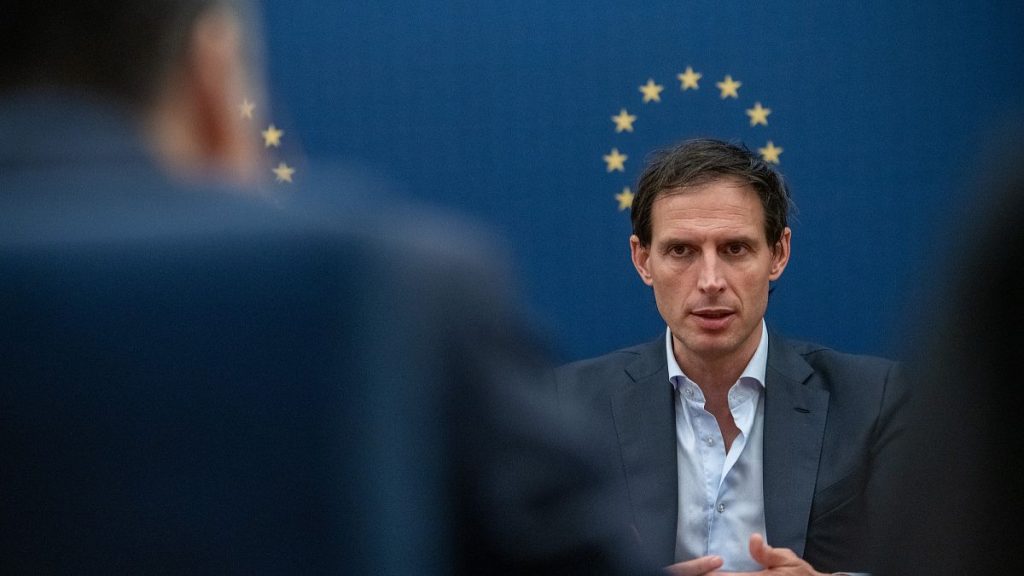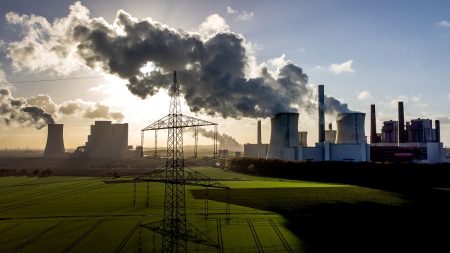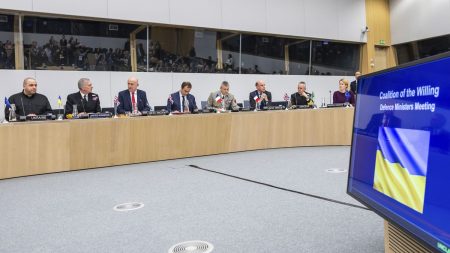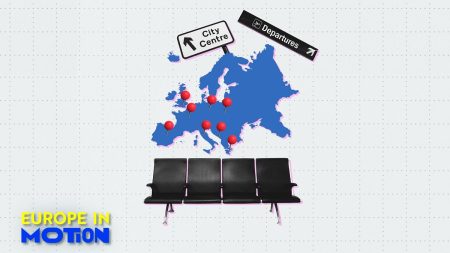The latest reports indicate that the European Union (EU) is experiencing a decline in greenhouse gas emissions, deviating from the global trend of continuously rising emissions. Despite this positive development, the EU is still not on track to meet its own climate action targets. The EU’s climate commissioner, Wopke Hoekstra, highlighted the significant drop in emissions across the bloc as evidence that climate action is achievable alongside economic growth. This comes as the EU prepares for the upcoming UN climate summit in Azerbaijan next month.
The EU’s annual carbon footprint has seen an 8.3% decrease in emissions, a significant drop that has not been observed since the anomaly of 2020. However, the EU remains far from its 2030 target of reducing emissions by at least 55%. While emissions in Europe are now 37% below the baseline year of 1990, the overall global carbon output has increased by 1.9% compared to 2022. Hoekstra emphasized the necessity of continued efforts to combat climate change, particularly in light of the harm it is causing to citizens. He will lead the EU’s delegation at the COP29 summit, where these climate action efforts will be further discussed.
The reduction in emissions has been unequally distributed across sectors, with sectors like power stations and factories witnessing a significant decline in CO2 equivalent output thanks to the EU emissions trading scheme. On the other hand, emissions related to buildings, agriculture, transportation, and waste have only seen a modest 2% decrease in 2023. Notably, aviation emissions have increased by 9.5% year on year. The European Environment Agency (EEA) attributes the reduction in Europe’s carbon footprint to decreased coal burning, increased adoption of renewable energy sources, and a general decline in energy consumption.
While Hoekstra remains optimistic about the progress made, the EEA has warned that EU governments need to strengthen their commitment to further reducing emissions in order to meet long-term targets. Current climate action measures are projected to result in only a 43% reduction by 2030, with additional projections from member states indicating a maximum reduction of 49%. This falls short of the necessary reductions needed to meet the EU’s legally binding goal of achieving net-zero emissions. EEA executive director Leena Ylä-Mononen emphasized the need for comprehensive action across all sectors over the next 25 years to address climate change impacts and reduce greenhouse gas emissions.
The upcoming COP29 summit in Azerbaijan will serve as a platform for global discussions on climate action and emissions reductions. The EU’s progress in reducing emissions while maintaining economic growth will be showcased as a model for other countries to follow. Nevertheless, the EU must continue to push for deeper emissions reductions and implement additional measures to achieve its climate action targets. The urgency of addressing climate change is emphasized as the impacts of climate change continue to accelerate, requiring strengthened resilience and commitment to reducing emissions in the coming years. By working together and taking decisive action, the EU and its member states can make significant strides towards a more sustainable and climate-resilient future.













